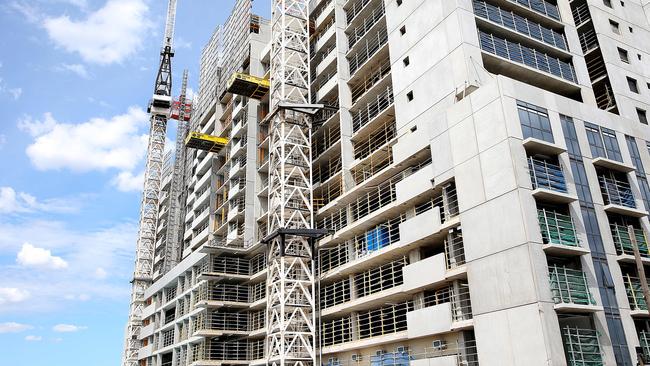
And that flood is only one of three forces set to transform inner city property after the long slump caused by the banking royal commission and the bank regulator-imposed credit squeeze.
A fourth force transforms outer suburban development.
In the process, this transformation will also change the way Australians save to increase returns.
Watch out banks ---- we are going back to the 1960s.
To understand how the new paradigm will unfold I want to take you back three decades. The inner-city boom started in the early 1990s when investors were first allowed to buy apartments off the plan and the property development market transferred from a game confined to large players to one where small investors could participate.
The strong market extended almost a decade but around 2000 the inner-city property market suffered a two or three-year setback as a result of the dotcom crash.
Then we had the mining boom and the inner-city property market surged on the back of increased Australian prosperity only to be once again knocked around, this time by the global financial crisis.
And then came liberal bank credit which sent the market off again. Mainland and Hong Kong Chinese entered the market on assurances from banks that they would fund the off-the-plan purchases when the apartments were completed.
Then came the royal commission and the credit squeeze imposed by the regulators. The banks reneged on their non-binding verbal assurances to the Chinese.
So, since 1990 we have had three seven to 10-year strong markets plus three tough markets which usually lasted two to three years.
Now it’s about to turn.
The spark comes from Hong Kong not mainland China, where it is now very hard to extract money.
A month ago, when the Hong Kong street protests were building up, I put out an alert under the heading “Australia must prepare for Hong Kong exodus” .
Since then Hong Kong property buying in Australia has increased but most of the money comes via Singapore. That’s why when Bloomberg reported this week that Singapore private bankers are being flooded with inquiries from investors in Hong Kong who are worried about the long-term effects of the political crisis, it was a sign that the money exodus to Australia was about to move up a notch.
And the Chinese prefer Melbourne over Sydney. Research by Lisa Allen in The Weekend Australian shows that in the first quarter of 2019 almost 44 per cent of the Chinese property buying in Australia went to Melbourne. Only 23.9 per cent went to Sydney.
The Chinese have picked Melbourne as the Australian city of the future. Some of that preference stems from what happened when the credit squeeze hit.
When the Australian banks reneged on their verbal undertakings, in Sydney Harry Triguboff’s Meriton came to the rescue with funding, but few others did.
In Melbourne the local families banded together via non-bank finance vehicles and helped out. The interest rates were higher than banks but the money was there and many Chinese were able to honour their off-the-plan contracts. And now those organisations are preparing to provide the finance for the next strong market. And the banks still have their regulator-imposed credit squeeze (albeit eased somewhat) and have been forced into offering token interest rates, so savers are forced to go elsewhere and are starting to move their deposits to these non-bank financiers. The trickle will become a rush.
It reminds me of the 1960s when the banks were also heavily restricted. To overcome the problem a string of finance companies like CAGA, IAC, AGC and Esanda were set up. But in the 1960s they were partly-owned by banks.
In 2019 banks will find it almost impossible to repeat the 1960s and own non-bank financiers. Yet it’s these groups who will provide the funding for the next strong market and they in turn will be funded by those who need a return on their interest-bearing capital. They are not as safe as banks but banks look like they are exiting the savings market.
(As an aside the new organisations should study what happened to the 1960s bank-owned finance companies and not make the same mistakes).
This time around big superannuation funds will be the third force delivering the stronger market in the property development and finance game and they will be led by the industry funds and those that are self-managed.
Like all new paradigms the market will move in ways we did not expect, but the basic pillars are there.
Meanwhile in outer suburban land around the country, the minister for housing Michael Sukkar is preparing to set up a finance operation which will enable first home buyers to buy dwellings on a five per cent deposit. Like the non-bank financiers Sukkar is getting around the regulator-imposed credit squeeze which has ravaged the industry.
There is a lot of action ahead.




A small Bloomberg cable this week alerted the inner-city property markets of Melbourne and to a lesser extent Sydney that the current trickle of Hong Kong money is about to become a flood.